Background
In past issues we have commented on prior reports from the Irish Climate Change Advisory Council (CCAC). In the title of our assessment of the CCAC first report we characterized it as “Disappointing.” Basically, we said that while the CCAC insisted that, “The Council does not make policy: that is the role of government,” nevertheless the Council is quite capable of advising and indeed of influencing and shaping those policies. Unfortunately we did not see the Council taking a proactive or critical role offering the government specific steps it needs to take. It seemed to be punting the ball down the road.
Subsequently, we wrote that several recent reports suggested that Ireland may have reached a tipping point where climate action is now broadly and deeply accepted. One of these reports was the CCAC Annual Review 2017. In that Review the CCAC offered a proactive, and exemplary role, in urging, even pushing, the government to do more. Importantly, it provided concrete and specific recommendations to the government and the tone of the Review was more urgent and critical.
The current Annual Report (2018) carries the transition forward. It starts with a forceful, even aggressive stance on the government’s continual refusal to address the fundamental corrective measures necessary to put a stop to the increasing greenhouse gas (GHG) emissions. The Executive Summary starts with “Key Messages,” the first of which is:
Irish greenhouse gas emissions are rising rather than falling. Ireland is completely off course in terms of achieving its 2020 and 2030 emissions reduction targets. Without urgent action that leads to tangible and substantial reductions in greenhouse gas emissions, Ireland is unlikely to deliver on national, EU and international obligations and will drift further from a pathway that is consistent with transition to a low-carbon economy and society. (Emphasis added)
The tone says as much as the content.
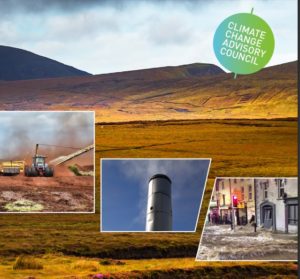
The Report: Current Conditions
After setting the tone, the CCAC proceeds to assess the current state of Ireland’s GHG emissions and then addresses the steps the government can, and must, take to overcome the consequences of its continuing failures. The CCAC report covers the power sector (including the need to end burning of coal at Moneypoint and the closing of peat-fired generation) and energy efficiency in the built environment, and details on these can be found in the Report. Here we will focus on two continuing, politically problematic sectors: agriculture and transport. The first has a powerful, organised and well-funded lobbying group, basically opposed to climate action, like the fossil fuel industry in the US; the second is so dispersed it represents almost everybody yet it seems to have no voice.
As the opening to the executive summary makes clear, greenhouse gas (GHG) emissions in Ireland are rising, not falling as they are supposed to be doing, and the increases are across all sectors of the economy. Energy industries, followed by agriculture and transport showed the largest increases over the past several years.
Most disturbing, economic growth accounts for much of the rise in emissions so that there is no decoupling of economic growth and GHG emissions, a disturbing signal. The coupling is most evident in the current and projected increases in agricultural emissions, largely because of the adoption of the expansion of the dairy herds as part of Food Wise 2025 policy. This economic policy continues to undermine the government’s EU climate obligations. The CCAC notes that, “This is of great concern to the Council.” At iv.
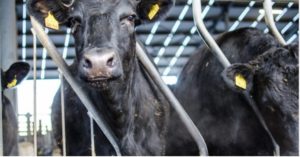
Despite claims by the agriculture industry and government as to better efficiencies in the sector, the Council finds that “Although there is evidence of improvements in efficiency of production, these have not been sufficient to avoid an increase in absolute emissions.” At 31.
The CCAC assesses also how passenger transport in particular is going in the wrong direction. Urban sprawl and spatial planning decisions are driving emissions higher, not lower, and road congestion leading to major employment centers gets worse. Ireland is the 5th highest member of the EU in terms of emissions from cars. Yet zero emission cars, including plug-in hybrid and all-electric cars, represent only 0.5% of new passenger cars in 2016.
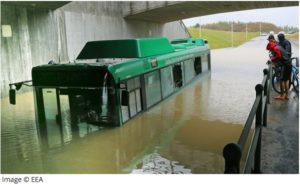
Nationally there has been little movement toward more sustainable modes of transport. However, there is improvement in Dublin where more people entered the city centre (between the Royal and Grand canals) by walking and cycling and in fewer cars between 2006 and 2017. At the same period there was little change in rail and bus usage into the city.
Under these conditions, Ireland will most certainly miss its 2020 EU targets for emission reductions, and will likely also miss its 2030 EU obligations, and its own national emission objectives by 2050. There does seem to be a certain perverse consistency in this record.
The government’s solution for missing targets is to allow agriculture to grow as the sector sees fit, with much the same for transport, and then pay for carbon offsets to satisfy its EU obligations. Such a “solution” is irresponsible because the substantial costs of the offset will come from the general public purse, instead of having the polluting sectors pay. In addition, the costs for offsets could have more productively been spent on mitigation measures that would begin to solve the problem.
Noting the deficiencies in the government’s polices to adequately address the emissions from these sectors, the CACC offers some guidance for improvements.
Transport: Possibilities
For transport, the Council points out that the government needs to eliminate contradictory policies that undermine GHG reductions. For instance, pushing for more roads can simply increase the number of vehicles emitting GHGs unless the transport policy also produces dedicated road spaces for cycling and walking and public transport. Cycling in particular is one of the most positive developments in sustainable transport and needs expanding support.
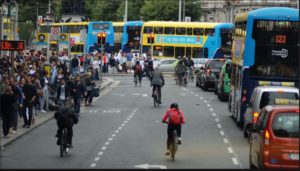
Moreover, any added roads must be accompanied by alternative fueling and charging points, to allow for low-carbon transport including the expansion of electric vehicles market. Any new charging infrastructure must be integrated with local and regional planning, building regulations, and electricity transmission and distribution networks.
Another critical step necessary for the government is a no-brainer: green public procurement. Purchase of sustainable zero-to-low carbon transport by public agencies is critical to promoting such transport in the private sector. Yet in 2016 only 0.7% of new service vehicles were either hybrid or zero emission; in 2017, it was 1.87%. Clearly, more needs to be done, and now.
While there are always lots of plans to expand public transport, actual expansion is missing. Indeed, public transport capacity has decreased in recent years and a European Commission study found that access to public transport is relatively low in Dublin compared with other EU cities. The Council notes that public transport in towns and villages outside Dublin are unlikely to improve, given the lack of a critical density of population in such areas.
For reducing emissions from freight transport the Council points to improving logistics efficiencies and fuel switching, driver behavior improvements, better business models, as well as engine performance and efficiencies.
Agriculture: Possibilities
The Council supports the expansion of solar facilities in rural communities to bolster local economies and broaden farmers’ incomes. To do so it is important that any such development of solar facilities not jeopardize farm payments under the CAP or other programs.
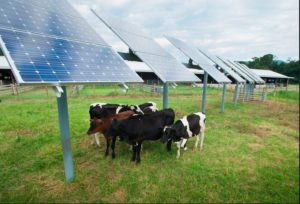
New hedgerow plantings, possibly in conjunction with environmental organizations, not only enhances biodiversity but also helps with carbon sequestration.
While the Green, Low-carbon Agri-environment Scheme (GLAS) is promoted by the government and industry, the Council finds that there is insufficient analysis of whether the scheme is having an impact on climate mitigation or adaptation. Moreover, the dairy sector, which is expanding, has a low level of participation in GLAS.
And while the government and sector talk about the “carbon neutrality” of the sector, neither has bothered to define the term and the Council calls for a meaningful definition of what this means.
Other Issues
The Council notes that the National Development Plan and National Planning Framework promote investments for road and rail, plans to address urban sprawl and rural development, and other steps to drive down GHG emissions. But it is not clear whether such steps will be taken or will remain mere promises or aspirations without actual implementation. There is the precedent of the National Mitigation and Adaptation plans being vague and largely useless.
Consistent with its earlier reports, the Council argues for a carbon tax priced at €30/tonne in 2019, rising to €80/tonne by 2030.
Conclusion
The Council ends its Executive Summary by stating: “Ireland is completely off course in terms of its commitments to addressing the challenge of climate change.” At v. The more direct, proactive, even confrontational tone of the Council’s report is understandable. The Council had begun to offer concrete advice on what the government actually needed to do and all it got back was tired old programs and ideas brought out of the closet, dusted off and labelled “measures” or “initiatives.” That would drive anyone to frustration. See, e.g., the Editorial in The Irish Times.
And why is the governmental response to climate action so feeble, as we have seen in the National Mitigation and Adaptation Plans. Even the Citizen’s Assembly delivered more concrete actions on climate change.
It certainly seems that tackling climate change is perceived as a threat to the economic growth of the agriculture sector. It must be what holds government ministers back from taking more proactive measures. One can suppose that whenever a government Minister, or agency, sees a sign for “Climate Action,” behind it up pops an oversized figure from the agriculture industry with a pitchfork aimed squarely at the Minister or agency staff.
Sources
Climate Change Advisory Council (Ireland), Annual Review 2018 (July 2018). bit.ly/2NL430o
“The Disappointing Irish Climate Change Advisory Council First Report” in Reports section of irish environment (01 January 2017). bit.ly/2OLLIRm
“A Tipping Point on Climate Change in Ireland?” in Reports section of irish environment (01 January 2018). bit.ly/2MHVNSd
Brian hutton, “Government ‘not leading by example’ on electric cars: Most departments have no chargers despite urging others to go green,” The Irish Times (27 August 2018). bit.ly/2MPWLMf
Editor’s Update – 03 September 2018: “The Irish Times view on Ireland’s response to climate change: incoherent and weak,” The Irish Times (1 Sept 2018). bit.ly/2PAkjT3


No comments yet, add your own below